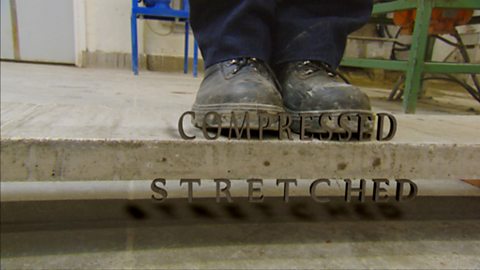Where do all the plastic goods that surround us come from?
Mark Miodownik explores the history and molecular structure of these ubiquitous materials, formed by long strings of molecules joined together to make polymers.
He explains how hydrocarbon waste products from oil refineries were first used to make nylon, PVC, polystyrene and polyester.
This clip is from Materials: How They Work.
Teacher Notes
Students could discuss and investigate everyday uses of plastics, compiling a list of all the uses of plastics in their lives.
Ask students to bring a range of clean, washed samples of different plastics to class.
These can be divided by name and recycling symbol number into different groups.
For any that are not labelled, students will have to examine their properties to best decide which group they are part of.
Following the clip, students could create their own polymer slime by combining a solution of polyvinyl alcohol with a borax solution.
Explain this in terms of chains and the crosslinks created between them.
Curriculum Notes
These clips will be relevant for teaching Chemistry at KS3 and GCSE/KS4 in England, Wales and Northern Ireland and National 4/5 or Higher in Scotland. The topics discussed will support OCR, Edexcel, AQA, WJEC GCSE in GCSE in England and Wales, CCEA GCSE in Northern Ireland and SQA National 4/5 and Higher in Scotland.
More from Materials: How They Work:
Bronze - The first alloy. video
Find out about the invention and impact of bronze, an alloy of copper and tin which was the first man-made alloy.

Development and uses of Optical Fibres video
Mark Miodownik describes how optical fibres work. He explains how they are able to transmit light over great distances.
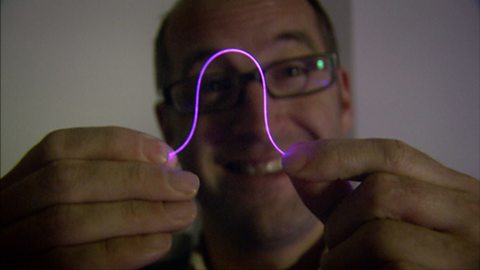
What is Graphene? video
Mark Miodownik describes the discovery of graphene. It’s the toughest material we know, 200 times stronger than steel, and able to carry electricity at 1 million metres per second.
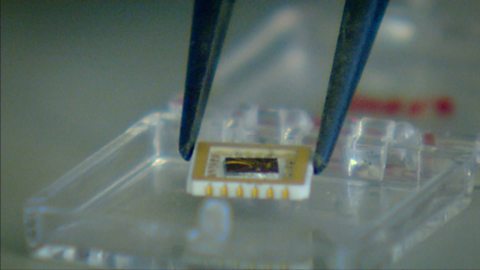
How was metal discovered? video
Scientist Mark Miodownik visits the earliest known copper mines in Israel's Timna Valley to explain the discovery of the first metal, copper.

How reinforced concrete works. video
To demonstrate the power of reinforced, a beam is tested with a 2.5 tonne load to see if it will crack. What is the chemistry behind its strength?

How the Romans invented concrete. video
Mark Miodownik explores how the Romans produced the first concrete and how concrete, glass and other ceramics are used in the modern world.

What is a superalloy? video
Mark Miodownik explores the world of superalloys, and puts the properties of one to the test showing how this metal is used inside a jet engine.
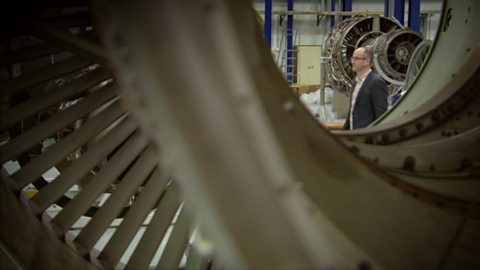
Superconductors and the 'Meissner effect' video
How can a piece of ceramic conduct electricity? Scientist Mark Miodownik explores the incredible potential of superconductivity.
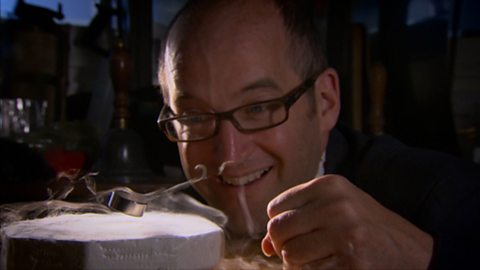
The atomic structure of metal. video
Scientist Mark Miodownik explains how the atomic structure of metals gives them unique and highly useful properties.
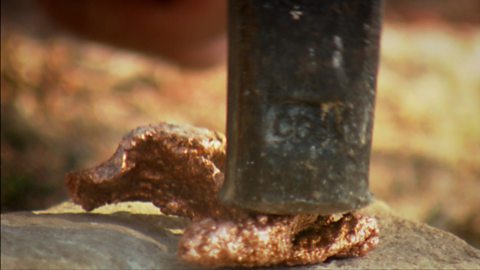
What is superconductivity? video
Mark Miodownik puts the properties of a superalloy to the test with a practical demonstration of the strength of a superalloy under high temperatures and how this metal is used inside a jet engine.

The Invention of Carbon Fibre. video
Mark Miodownik describes the invention of carbon fibre composite by engineers at a Royal Aircraft Establishment in 1963.

Goodyear's groundbreaking invention of vulcanised rubber. video
Mark Miodownik describes Charles Goodyear’s experiments to vulcanise natural rubber into synthetic rubber.
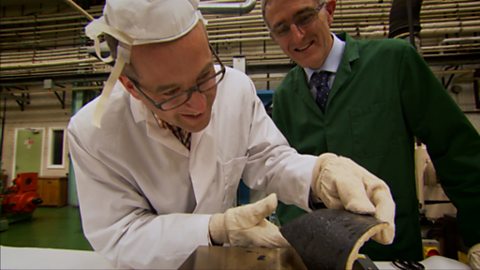
The structure, properties and uses of Bakelite. video
Mark Miodownik describes the work of the chemist Leo Baekeland, who invented the plastic Bakelite.

What is reinforced concrete? video
Find out how concrete is reinforced through the use of steel. Scientists demonstrate how this works and how this method was invented in 1853.
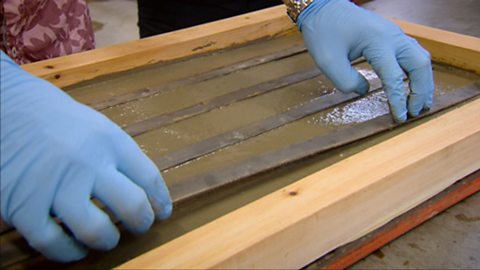
Why is concrete so brittle? video
Find out about the chemistry behind concrete. Scientists use experiments and animations to demonstrate how concrete breaks under stress.
